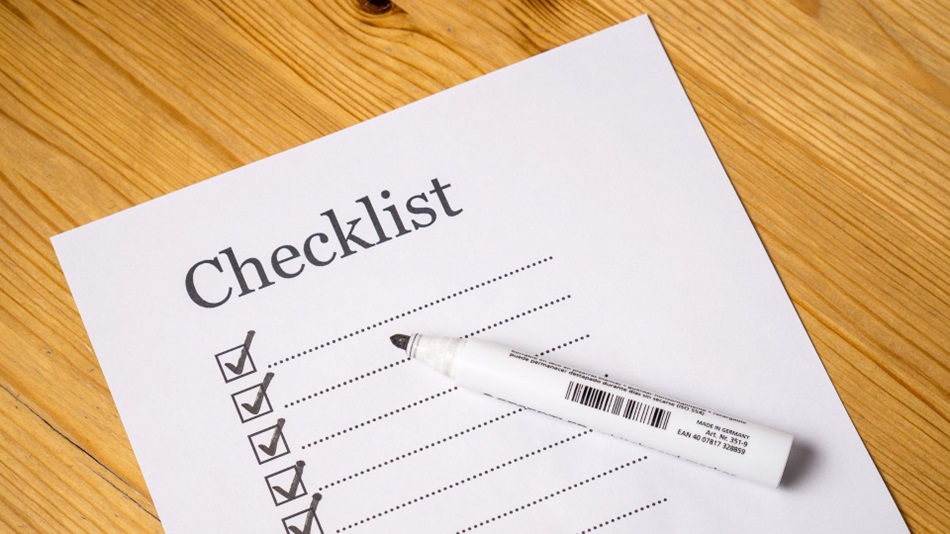The heating, ventilation, and air conditioning (HVAC) system is an essential component of any home or building. To make sure your HVAC system is running as efficiently and safely as possible, it’s important to keep up with regular tune-ups. A comprehensive HVAC tune-up should include a thorough inspection of all components of the system. In this article, we’ll provide a complete HVAC tune-up checklist so you can make sure all the components of your system are working optimally and safely.
Why is an HVAC Tune-Up Important?
An HVAC tune-up is important in order to maintain the safety and efficiency of your heating and cooling system. A tune-up can identify potential problems before they become major issues and can help you avoid expensive repairs. Additionally, regular tune-ups can help improve the performance of your system, reduce energy consumption, and extend the life of your HVAC system. So, let’s get started with our HVAC tune-up checklist.
A Checklist for Your HVAC Tune-Up
1. Inspection
The first step in any HVAC tune-up should be inspecting and cleaning or replacing the air filters. Dirty air filters can restrict airflow and reduce efficiency, so make sure to check them regularly. You should also inspect all air ducts for signs of damage or obstructions. This will help prevent air leaks or blockages that can reduce the efficiency of your system.
2. Cleaning or Replacing Air Filters
Dirty air filters can reduce the efficiency of your system and cause it to work harder than necessary. They also reduce the quality of indoor air by allowing dust, pollen, and other pollutants to circulate throughout your home. Therefore, cleaning or replacing air filters is a critical part of any HVAC tune-up.
3. Examine Thermostat Settings
Checking thermostat settings ensures that the temperature inside your home matches what you have set on the thermostat. This step helps optimize energy usage and keeps your home comfortable. It further helps ensure your system is running as efficiently as possible.
4. Inspecting Electrical Connections
Electrical connections are checked to ensure they are tight and not corroded. Faulty electrical connections can cause safety hazards as well as damage to your equipment. For example, with AC units, loose connections can lead to compressor failure. In this case, calling an expert for AC repair in Atlanta can save you time and money. They can identify and fix the issue as quickly as possible.
5. Lubricating Moving Parts
All moving parts should be lubricated as part of an HVAC tune-up. This helps ensure that all components are functioning properly and reduces wear and tear. Just make sure to use the correct type of lubricant for your system.
6. Checking Refrigerant Levels
Low refrigerant levels can cause poor performance from your HVAC unit or even complete failure in some cases. Checking refrigerant levels ensures that there are no leaks in the system. It should be done at least once a year, and any leaks should be addressed immediately.
7. Clearing Drainage Lines
Clogged drainage lines are one of the leading causes of HVAC system failure, as they can cause water to back up into your home or business. Moreover, they can also lead to unpleasant odors and mold growth. Make sure to check the drainage lines during a tune-up in order to prevent any potential issues.
How Often Should You Schedule an HVAC Tune-Up?
It’s recommended that you schedule an HVAC tune-up once a year for both heating and cooling systems – preferably before each season begins when you’ll be using them most often. By knowing the causes of HVAC breakdowns and how to prevent them, you can keep your HVAC system running smoothly, efficiently, and safely all year round. With regular tune-ups and maintenance, you’ll also enjoy lower energy bills, improved air quality, and a longer life for your system.
To Wrap Up
A comprehensive HVAC tune-up is important for keeping your system running safely and efficiently. The checklist provided above will help you ensure that all components of your system are in good condition. Be sure to schedule regular tune-ups and follow the steps outlined above for optimal performance from your HVAC system. Thank you for reading.

